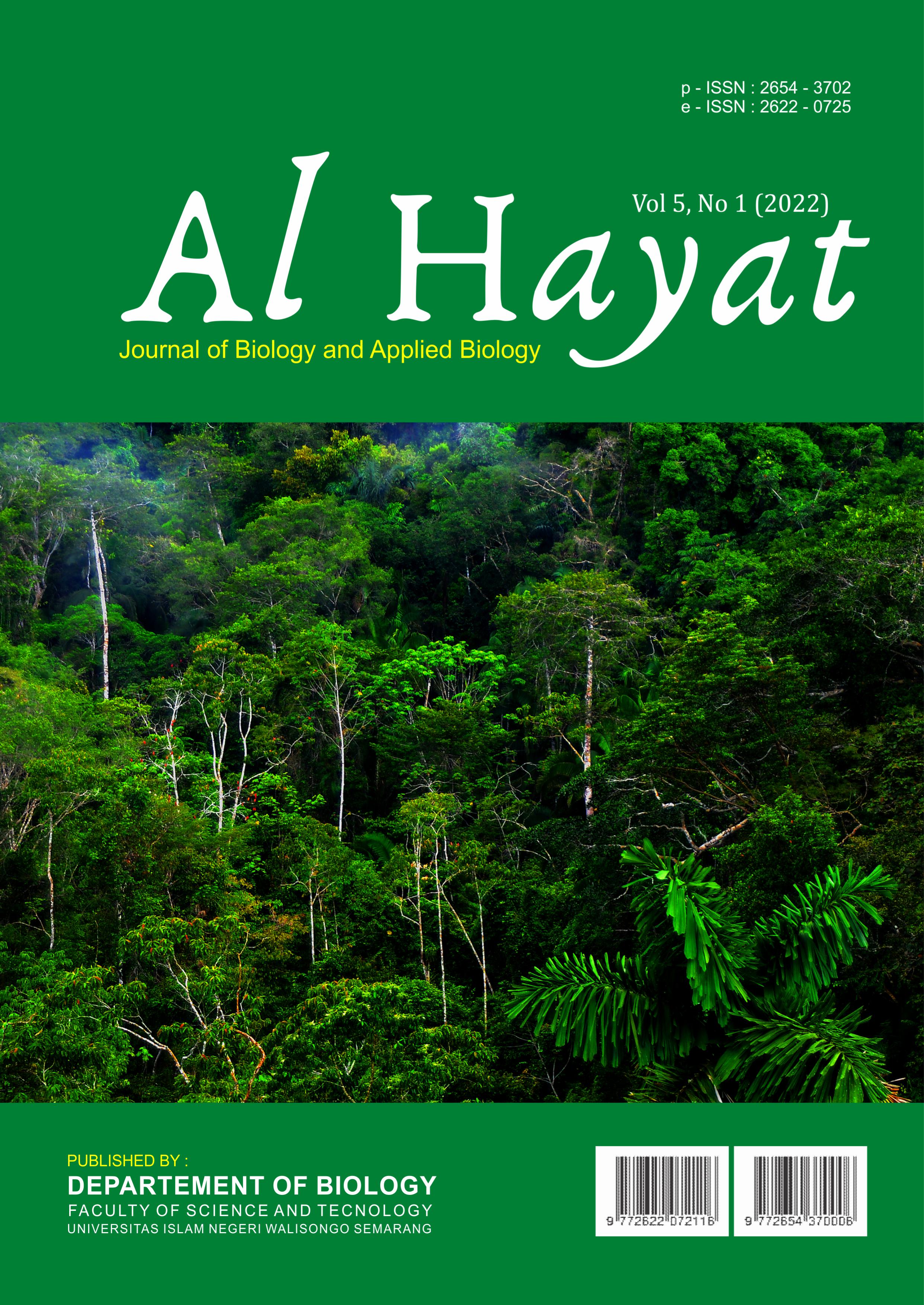Antagonism Trichoderma harzianum Rifai in Suppresing the Intensity of Antraknosa (Colletotrichum capcisi Sydow.) Disease
Main Article Content
Abstract
Cayenne pepper (Capsicum frutescens L.) is a horticultural plant that has high economic value and contains nutrients that the body needs. Cayenne pepper is one of the leading national horticultural commodities, so it is necessary to increase the production of cayenne pepper appropriately. The obstacle that is often faced in the production of cayenne pepper is the disruption of the production of cayenne pepper caused by the attack of anthracnose disease. Anthracnose disease or fruit rot caused by the fungus Colletotrichum capcisi Sydow can result in yield losses ranging from 20-90%. Trichoderma harzianum Rifai. is a soil saprophytic fungus that naturally can be used as a biological agent, because it has antagonism against pathogens in the form of competition for space and nutrients, mycoparasites and antibiosis. The experimental results in the laboratory showed that the biological agent Trichoderma harzianum Rifai was able to suppress the development of anthracnose disease.
Downloads
Article Details
The copyright of the received article shall be assigned to the journal as the publisher of the journal. The intended copyright includes the right to publish the article in various forms (including reprints). The journal maintains the publishing rights to the published articles. Authors are allowed to use their articles for any legal purposes deemed necessary without written permission from the journal with an acknowledgment of initial publication to this journal.
The work under license Creative Commons Attribution-ShareAlike 4.0 International License.
References
Paulus A P, Ellen G T. Faktor-faktor yang mempengaruhi harga cabai rawit di Kota Manado. Agri Sosioekonomi. 2016 May 11;12(2):105-20. DOI: https://doi.org/10.35791/agrsosek.12.2.2016.12278
Sofiarani FN, Ambarwati E. Pertumbuhan dan hasil cabai rawit (Capsicum frutescens L.) pada berbagai komposisi media tanam dalam skala pot. Vegetalika. 2020;9(1):292-304. DOI: https://doi.org/10.22146/veg.44996
Irfandri I, Hamzah A, Rustam R, Fauzana H, Effendi A. Pengembangan Tanaman Cabai Rawit untuk Peningkatan Ekonomi Keluarga di Desa Koto Parambahan Kecamatan Kampar Kabupaten Kampar. Journal of Community Services Public Affairs. 2021;1(2):45-50.
Polii MG, Sondakh TD, Raintung JS, Doodoh B, Titah T. Kajian teknik budidaya tanaman cabai (Capsicum annuum L.) Kabupaten Minahasa Tenggara. Eugenia. 2020 Nov 30;25(3). DOI: https://doi.org/10.35791/eug.25.3.2019.31402
Habibi I, Wijayanto K. Efektivitas Pengendalian Penyakit Antraknosa Secara Organik Terhadap Produksi Tanaman Cabai Rawit (Capsicum frutescens L.) (Kajian dalam Polibag). Jurnal Ilmiah Hijau Cendekia. 2019;4(2):60-9. DOI : 10.32503/hijau.v4i2.626
Ministry of Agriculture. (2019). Introduction to anthracnose in chili and how to control it. Available at: http://cybex.pertanian.go.id/mobile/article/84152/Pengenalan-Penyakit-Antraknosa-Pada-Chilli-Dan-Cara-Controlling/ . Retrieved November 23, 2021.
Agricultural Research and Development Agency. Anthracnose Disease Control in Chili Plants. 2016. Available at: https://www.litbang.pertanian.go.id/info-technology/2630/. Accessed 27 November 2021
Mariana EL, Cholis FR, Adiyatama MD, Adhni AL, Hasbi NS. Ketahanan Jamur Colletotrichum spp. Penyebab Antraknosa Buah Cabai terhadap Fungisida di Lahan Rawa. Inprosiding Seminar Nasional Lingkungan Lahan Basah, 2021 (Vol. 6, No. 2).
Amelia M, Marsuni Y, Budi IS. Pengaruh Ekstrak Daun Kenikir (Cosmos Caudatus Kunth.) Terhadap Cendawan Colletotrichum Sp. Pada Buah Cabai Rawit. Jurnal Proteksi Tanaman Tropika. 2020 Jan 20;3(1):157-63. DOI: https://doi.org/10.20527/jptt.v3i1.332
N. Safitri, A. Martina, R.M. Roza (2019). Uji Antagonis Cendawan Isolat Lokal Riau Terhadap Beberapa Cendawan Patogen Pada Tanaman Budi Daya. Vol. 12(2), 2019, 124-132. DOI: http://dx.doi.org/10.15408/kauniyah.v12i2.8730
Ningsih HU, Hastuti DL, Listyorini D. Kajian Antagonis Trichoderma sp. terhadap Fusarium solani Penyebab Penyakit Layu Pada Daun Cabai Rawit (Capsicum frutescens) secara In Vitro. InProceeding Biology Education Conference (ISSN: 2528-5742) 2016 (Vol. 13, No. 1, pp. 814-817).
Suwahyono,U. dan P.Wahyudi. 2004. Trichoderma harzianum Indigeneous untuk Pengendalian Hayati. Studi Dasar Menuju Komersialissi dalam Panduan Seminar Biologi. Yogyakarta : Fakultas Biologi UGM. Hal:62-69
Kalay AM, Talahaturuson A, Rumahlewang W. Uji Antagonisme Trichoderma harzianum Dan Azotobacter chroococcum Terhadap Rhyzoctonia solani, Sclerotium rolfsii dan Fusarium oxysporum secara in-vitro. Agrologia. 2018 Dec 17;7(2). DOI: http://dx.doi.org/10.30598/a.v7i2.764

